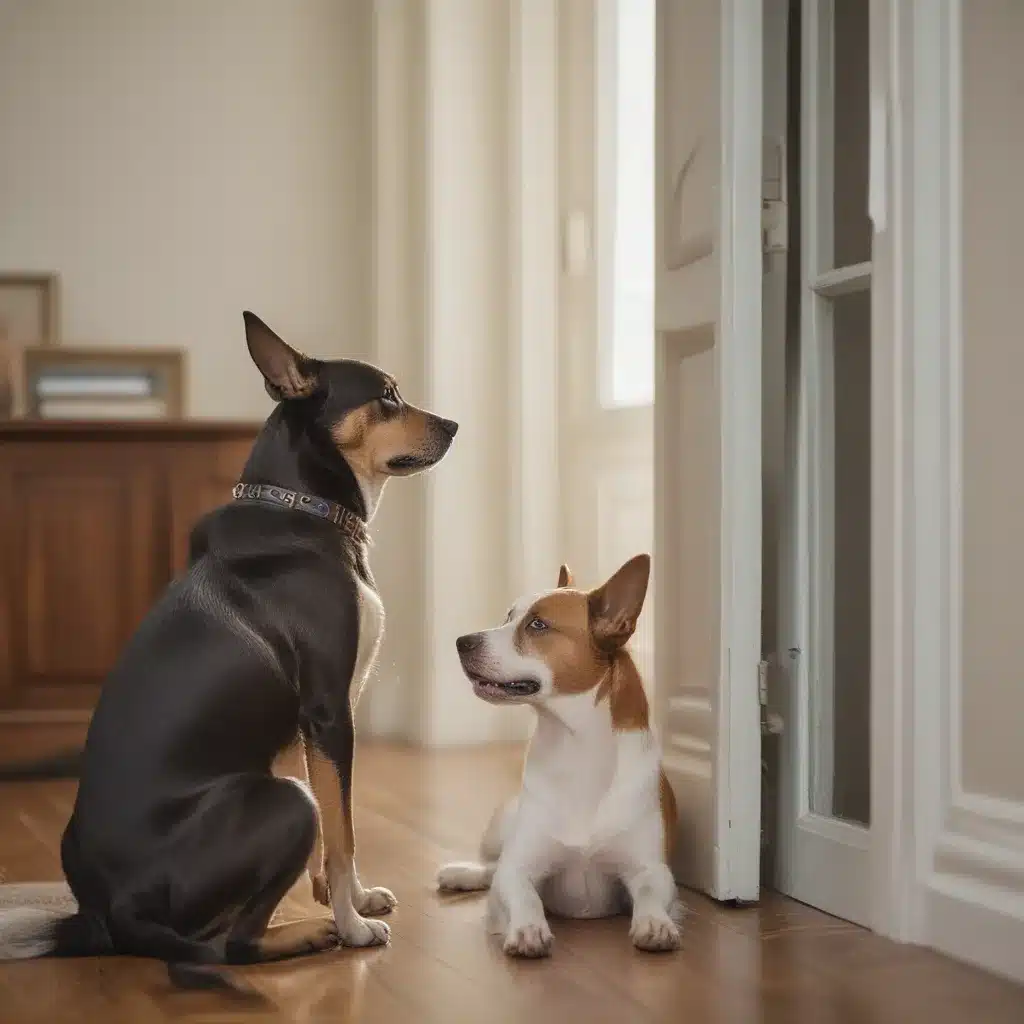
As a dog owner, I know how heartbreaking it can be to see your furry friend panic when you have to leave them behind. The problem is, our canine companions are inherently social creatures, and being left alone can be a real source of stress and anxiety for them. But fear not, my fellow dog lovers! I’m here to share some tried-and-true tactics to teach your pup how to be calm and content when home alone.
Understanding Separation Anxiety
Let’s start with the basics. Separation anxiety is a common issue that affects many dogs, especially those who have been adopted or who are still getting used to their new home. It’s a condition where your dog becomes overly stressed and anxious when you’re not around, leading to destructive behaviors, excessive vocalization, or even potty accidents.
The good news is, with patience and the right training techniques, you can help your dog overcome this challenge. The key is to work on slowly and gradually acclimating them to being left alone, so they learn that your absence is nothing to worry about.
Building a Positive Association
One of the most effective strategies is to create a positive association between your departure and something your dog loves, like a high-value treat or an engaging toy. As the experts at Preventive Vet suggest, you can do this by giving your dog a stuffed Kong or another interactive puzzle toy right before you leave. That way, they’ll start to associate your exit with something exciting and delicious, rather than anxiety-inducing.
I tried this approach with my own dog, Buddy, and it worked like a charm. Whenever I’d gather my keys and coat, he’d get all excited, knowing his favorite treat-filled toy was coming his way. And when I returned, I’d calmly retrieve the toy and put it away, reinforcing the idea that my absence is no big deal.
Systematic Desensitization
Another highly effective technique is called systematic desensitization, which essentially means breaking down the entire departure routine into small, manageable steps. As the article on Preventive Vet explains, you can start by simply putting on your shoes and grabbing your keys, without actually leaving the house. Then, you can progress to opening the door and stepping outside, gradually increasing the duration of your absence over time.
The key here is to stay calm and relaxed throughout the process, as your dog will pick up on any anxiety you’re feeling. And remember to reward your pup with treats and praise whenever they remain calm and relaxed during these practice sessions.
Crate Training for Comfort
Crate training can also be a game-changer when it comes to helping your dog feel secure and relaxed when you’re not around. As the Preventive Vet article suggests, a properly trained dog will often feel more secure in their crate, which can be like their own little room with familiar scents and comforts.
I’ll admit, when I first brought Buddy home, the idea of crate training seemed a bit daunting. But once I got the hang of it and made sure his crate was a cozy, positive space, he took to it like a fish to water. Now, whenever I need to step out, he happily trots into his crate, knowing he’s got his favorite toys and treats waiting for him.
Embracing the Routine
One final tip that’s been a game-changer for me is to make your comings and goings as low-key as possible. As the RSPCA advises, you don’t want to create a big fuss when you leave or return, as that can reinforce the idea that your absence is a big deal. Instead, try to keep things calm and matter-of-fact, so your dog learns that you coming and going is no big whoop.
I used to make a huge production out of greeting Buddy when I got home, and he’d get so worked up that it was hard to get him to settle down. But after implementing the “no-fuss” approach, he’s become much more relaxed and confident about being left alone. Now, I just calmly greet him, give him a few pets, and then go about my business – and he’s content to do the same.
Putting It All Together
Remember, every dog is different, so you’ll need to tailor your training approach to your pup’s individual needs and comfort level. But with a little patience, consistency, and the techniques I’ve outlined here, you can absolutely help your four-legged friend learn to be calm and content when you’re not around.
And who knows, maybe they’ll even start to enjoy the solo time, like my Buddy does. After all, what could be better than having the whole house to yourself and a brand-new toy to play with?
If you’re looking for more tips and resources on dog training and care, be sure to check out iHaveDogs.com – they’ve got a wealth of information to help you and your furry companion live your best lives together.

